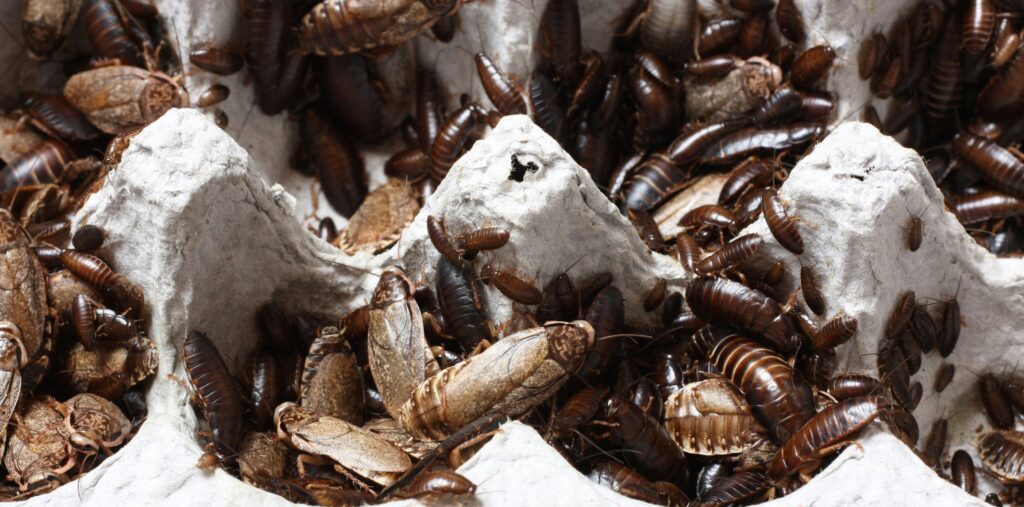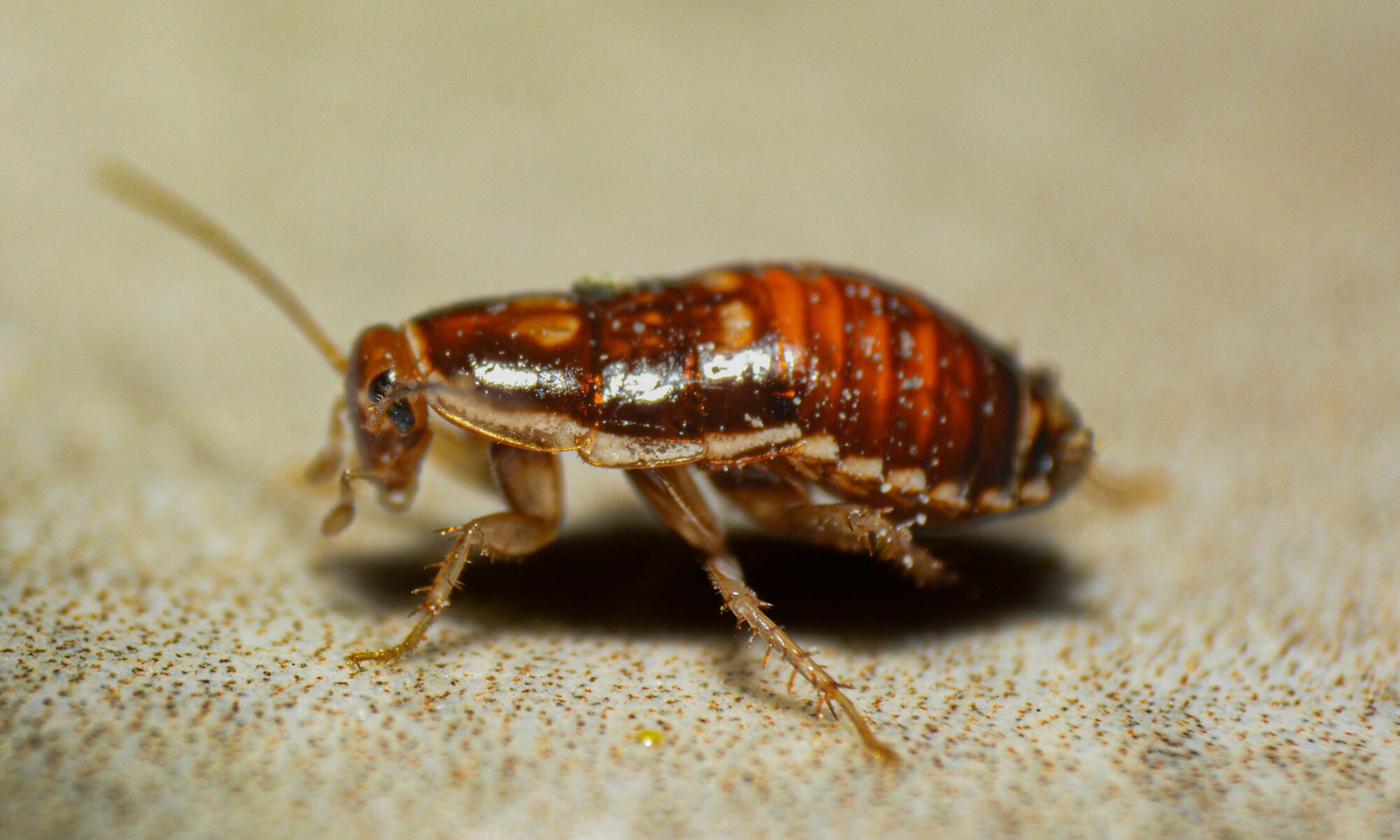Tropical cities like Singapore come with its own share of disgusting secrets, and cockroaches are one of them. One of the most common and persistent household pests, they thrive in environments that provide food, water, and shelter. Understanding the causes of cockroach infestations and learning effective ways to get rid of them is essential for maintaining a clean and healthy home.
Read on as we explore the reasons behind cockroach infestations, their distinct smell (ew!), and telltale signs like droppings, along with practical tips to eliminate them for good.
- What Causes Cockroach Infestations?
- Recognizing the Signs of a Cockroach Infestation
- Preventing Cockroach Infestations
- Why Address Cockroach Infestations Quickly?
What Causes Cockroach Infestations?
| Food Sources | Widely known as scavengers, roaches thrive in environments where food is easily accessible. Crumbs, spills, unsealed food containers, and even pet food can attract these pests. Even a small grease spot on a stove can serve as a feast for them. |
| Moisture and Water | Needing water to survive, damp areas in your home is ideal for roaches. Leaky pipes, dripping faucets, and standing water in sinks or pet bowls provide the moisture they need to thrive. |
| Clutter and Hiding Spots | They love to hide in dark, cluttered spaces. Cardboard boxes, piles of newspapers, and other stored items create perfect hiding spots for roaches, especially in basements, attics, and storage rooms. |
| Warm Environments | Cockroaches prefer warm temperatures, hence it’s no surprise that tropical climates like Singapore are particularly prone to infestations. They’re often found in kitchens, bathrooms, and appliances that emit heat. |
| Entry Points | Gaps in windows, doors, or cracks in walls can serve as entry points for cockroaches. They can also hitch a ride into your home through grocery bags, furniture, or even luggage. |

Recognizing the Signs of a Cockroach Infestation
| Smell | Believe it or not, roaches emit a distinct musty, oily odor caused by their pheromones. In severe infestations, the smell becomes strong enough to be noticeable and can affect food or fabrics in the home. |
| Droppings | Cockroach droppings resemble small black or dark brown specks, often mistaken for coffee grounds. Larger species, like American cockroaches, leave cylindrical droppings. These are typically found near food sources, in cabinets, or along skirting boards. |
| Egg Cases (Oothecae) | Egg cases are often found in hidden areas like behind furniture, under appliances, or in drawers. Each egg case can contain multiple eggs, contributing to rapid population growth. |
| Live or Dead Cockroaches | Spotting live cockroaches scurrying away when you turn on the lights is a clear sign of an infestation. Dead roaches, especially in hidden areas, also indicate their presence. |
| Shed Skins | As these pesky pests grow, they shed their skins. Finding these translucent casings is another sign of an active infestation. |
How to Get Rid of Cockroaches
1. Deep Cleaning and Decluttering
Begin by removing the sources of food, water, and shelter that cockroaches rely on:
- Clean kitchen counters, floors, and appliances thoroughly to remove crumbs and grease.
- Store food in sealed containers, including pet food.
- Remove clutter, especially cardboard boxes and old newspapers.
2. Eliminate Moisture Sources
Fix any leaks in pipes or faucets to remove their access to water. Wipe down wet surfaces, and avoid leaving dishes or sponges soaking in sinks overnight.
3. Use Cockroach Traps and Baits
At the risk of sounding inhumane, cockroach traps and bait stations are effective for monitoring and reducing their population:
- Place sticky traps near suspected hiding spots to catch live cockroaches.
- Gel bait or bait stations containing insecticides can be used to attract and poison cockroaches.
4. Seal Entry Points
Prevent cockroaches from entering by sealing cracks and crevices in walls, around windows, and doors. Install door sweeps and weather stripping to block their access.
5. Apply Insecticides and Natural Repellents
For severe infestations, insecticides may be necessary:
- Use sprays labeled for cockroach control, focusing on areas like baseboards and under sinks.
- For a natural approach, use essential oils such as peppermint, lavender, or eucalyptus, which repel cockroaches. Merely add a few drops to cleaning solutions or use a diffuser, and let it do its trick.
6. Call Professional Pest Control
If all else fails, professional pest control services can provide thorough treatments tailored to your home. These services often include long-lasting barriers to prevent future infestations.

Preventing Cockroach Infestations
| Regular Cleaning Routine | Maintain a consistent cleaning schedule, paying extra attention to areas prone to grease and food residue. |
| Proper Food Storage | Always store food in airtight containers and avoid leaving leftovers uncovered. |
| Maintain Low Humidity | Dehumidifiers can be used to reduce indoor humidity levels, especially in areas like bathrooms and kitchens. |
| Inspect Incoming Items | Carefully check grocery bags, furniture, and packages for signs of cockroach activity before bringing them into your home. |
| Monitor High-Risk Areas | Regularly inspect hidden areas like under sinks, behind appliances, and in storage rooms for early signs of infestation. |
Why Address Cockroach Infestations Quickly?
Cockroaches are not just an annoyance — they pose significant health risks. They can contaminate food and surfaces with bacteria, leading to foodborne illnesses. Cockroach allergens can also trigger asthma and allergies, particularly in children. Hence, it’s important to address infestations early prevents these risks and ensures a healthier home environment.
Final Thoughts
Cockroach infestations can be both unpleasant and harmful, but with proper knowledge and action, you can effectively eliminate them and prevent their return. Regular cleaning, especially, is the key to keeping your home cockroach-free. By staying vigilant and proactive, you can maintain a clean, healthy living environment for you and your family.
Keep in mind that a combination of methods works best for long-term results. Don’t let these tiny invaders disrupt your comfort — take action today!



You must be logged in to post a comment.